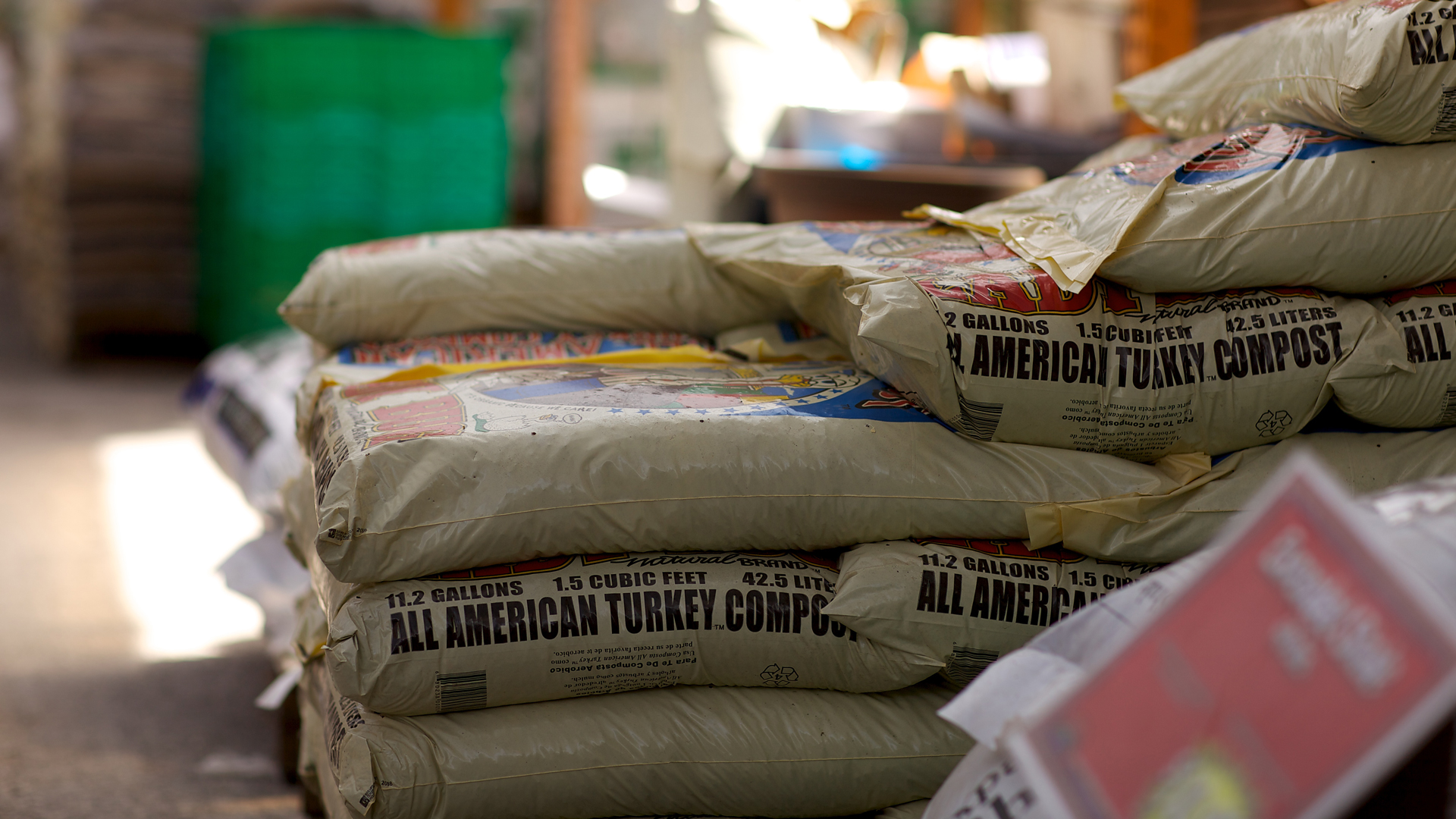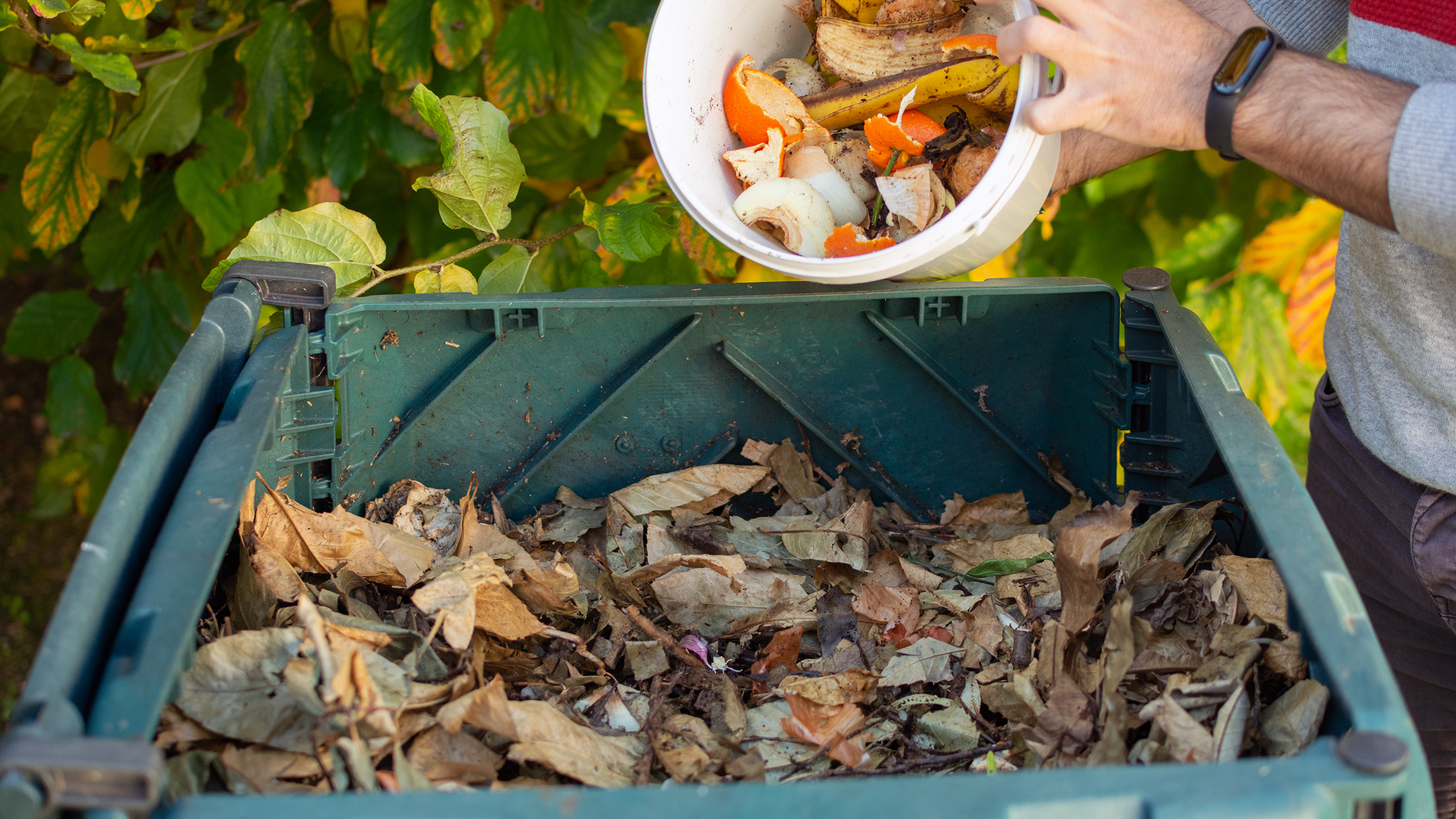Compost is the stuff of life, brimming with magic-making microbes that nourish the soil.
You may already know that compost is decaying plant and animal matter, from grass clippings and leaves to twigs, sawdust, or manure. What you may not know is that the decaying of compost is carried out by hardworking microbes, bacteria and fungi.
When you apply the finished product to your own garden beds or grass, those microbes and living processes are transferred into your own soil. And that’s where the magic happens.
Compost is the stuff of life, and when those millions of microbes go to work in the soil, they cycle nutrients that then become available to growing plants. The mixture is rich, dark and resembles potting soil when applied, but it’s basically a natural fertilizer.
When Master Gardeners recommend “feeding the soil” to grow healthy plants, they’re usually talking about compost.
Many vegetable gardeners are familiar with the art of composting kitchen scraps like coffee grounds and eggshells. But for beginners or non-composters, you can also purchase compost (or have it delivered by the cubic yard) from local producers.

Apply it as a quarter or half-inch layer on top of the landscape by using a shovel or wheelbarrow to cast it over the grass or garden beds. Then smooth it evenly with a light rake. (This work can also be performed by lawn care companies.) After a week or so it becomes less noticeable as it blends into your lawn or garden beds.
Within a few weeks, the results speak for themselves: a healthier, greener more alive lawn. That’s because in addition to providing nutrients, compost’s soft texture can improve the moisture holding-capacity of any soil. In clay soil it lessens compaction and restores air, nutrient and water filtration, and in sand, it improves clumping and moisture retention.
Compost can also boost thin rocky soils — you can reduce the compost by about half and add some fresh soil to the mix. Of course, for best results in thin soils, you’re better off reducing the grass area and growing native plants instead.
Still confused by compost? Here’s the answers to a few FAQs.
When is the best time to apply compost?
In south-central Texas, the best time is spring and fall. May is typically the end of the spring compost season since fully baked compost tends to give off heat you won’t need in summer.
Is there really manure in compost?
It depends. There’s an ideal ratio in any compost mix of one part green (grass and manure) to three or four parts brown (twigs and leaves.) For commercial producers, manure is a good way to supply the green portion of this ratio. Store-bought compost is available in a variety of formulations, and they will of course specify whether manure has been included. Backyard composters use vegetables cuttings, teabags, coffee grounds and other green ingredients.

Is compost hot?
Compost is said to be “baking” because temperatures can reach anywhere from 120 to 160 degrees when actively decaying. It can take a few months to a year or more to complete the cooking process, depending on setup, moisture and other factors.
“Hot compost” is a specific method of speeding it up. Depending on the moisture level and the aeration technique, good compost can result in as little as three weeks.
Store-bought compost should have cooked for at least six weeks to sterilize weed seeds and, if manure is used, to eliminate any harmful bacteria.
What’s the difference between compost and top-dressing?
Many people use the terms interchangeably, but compost is the basic decomposed residue of plant and animal materials (leaves and manure), while top-dressing is a mixture of compost and sand or sandy loam.
Top-dressing is also just a verb, meaning to spread any compost product over existing soil.
How much do I need?
One cubic yard is about 27 cubic feet: roughly the amount to fill a full-size pickup bed. Bags of compost usually come in two cubic feet bags. You’d need 14 bags to equal one cubic yard.
| Lot size (acres) | Lot size (cubic feet) | Minimum amount of compost or top-dressing |
| 0.06 – 0.11 | 2,500 – 5,000 | 1 cubic yard |
| 0.12 – 0.18 | 5,001 – 8,000 | 2 cubic yards |
| 0.19 – 0.23 | 8,001 – 10,000 | 4 cubic yards |
| 0.24 – 0.46 | 10,001 – 20,000 | 6 cubic yards |
| ≥0.47 | ≥20,001 | 10 cubic yards |
Should I aerate at the same time?
Aeration removes plugs of soil from the ground and deposits them back on the surface (these quickly disappear back into the lawn.) It allows air, water and nutrients to reach the roots. It’s great to aerate at the same time as applying compost, but be careful not to damage any in-ground irrigation you have.
It takes about 20 minutes to aerate an average lawn by rolling it with a rental aeration machine.


